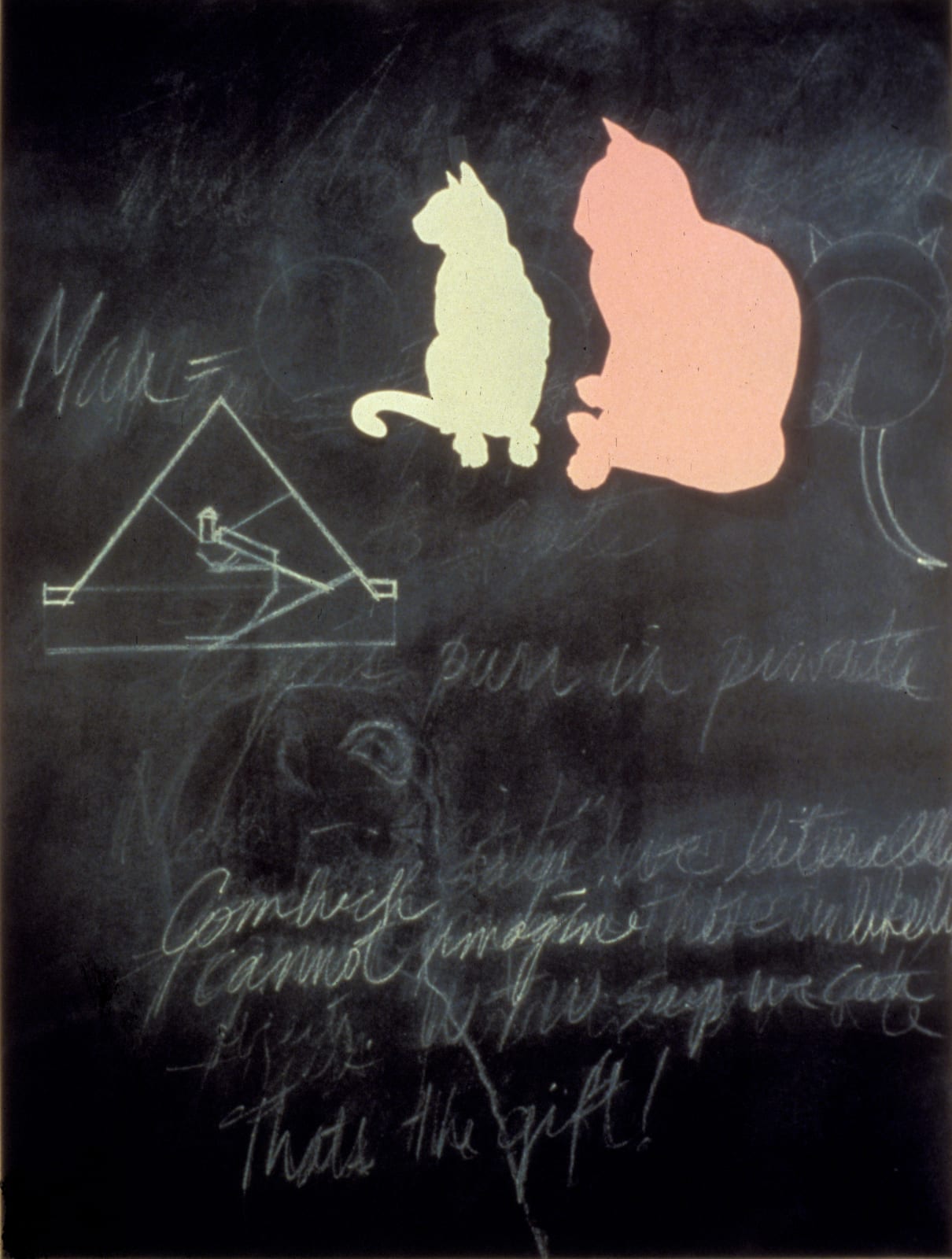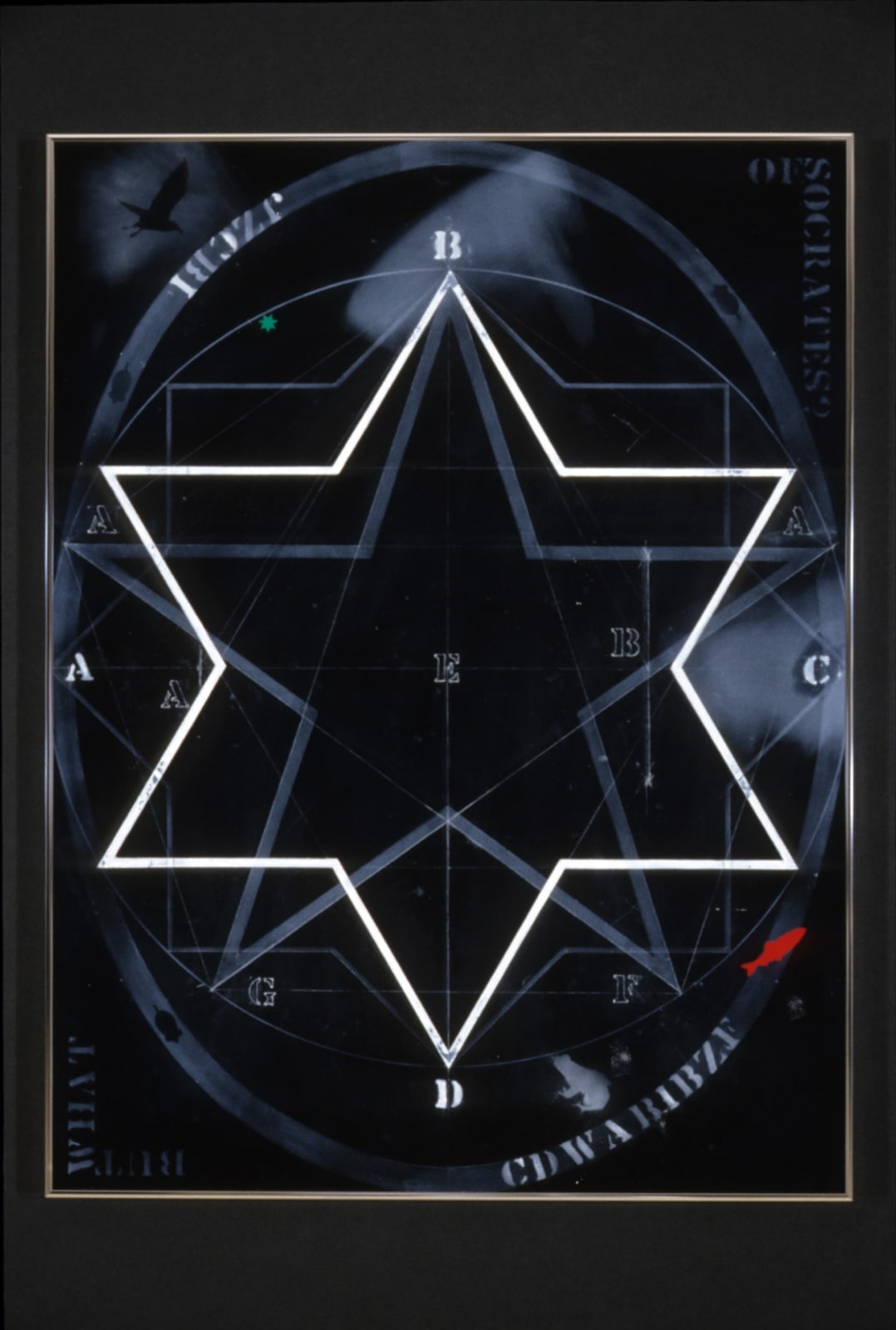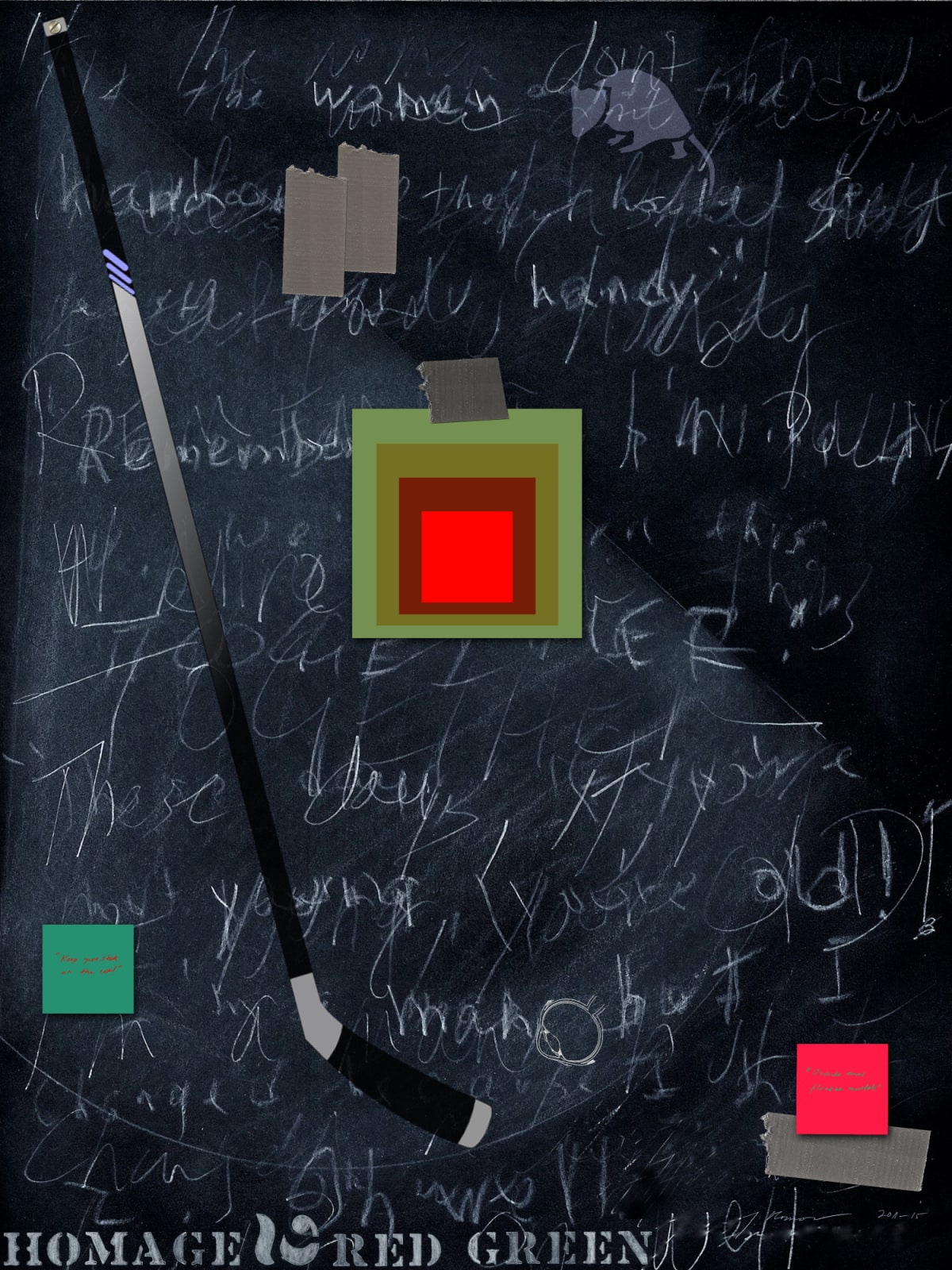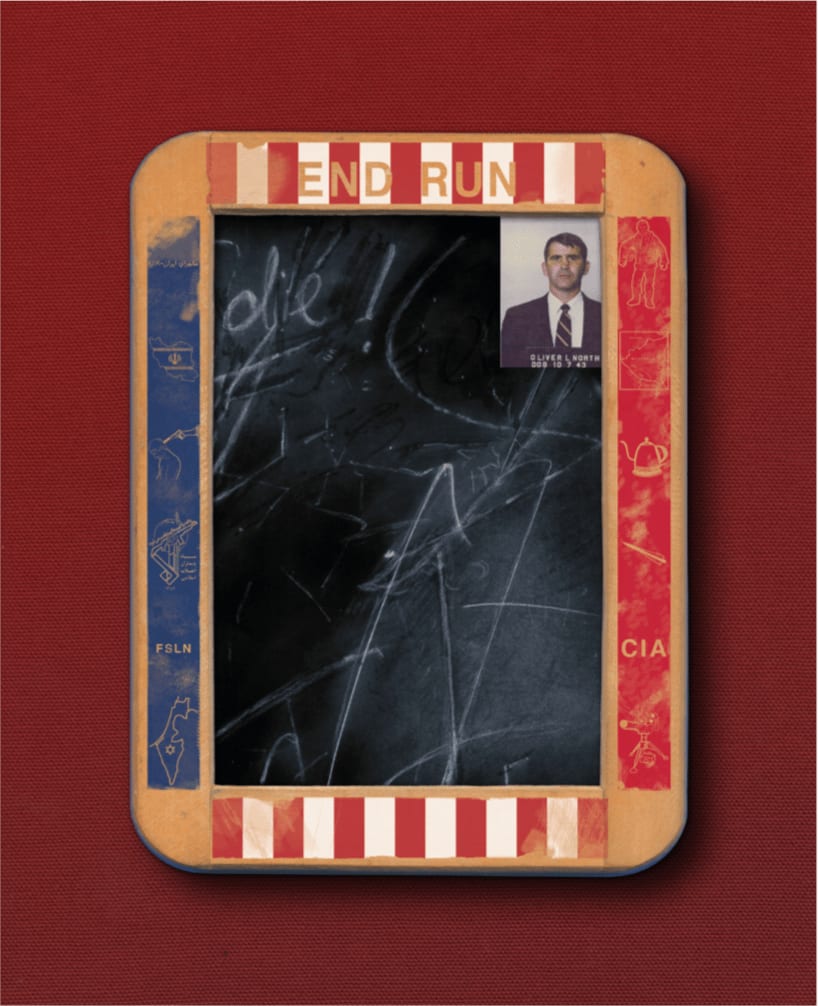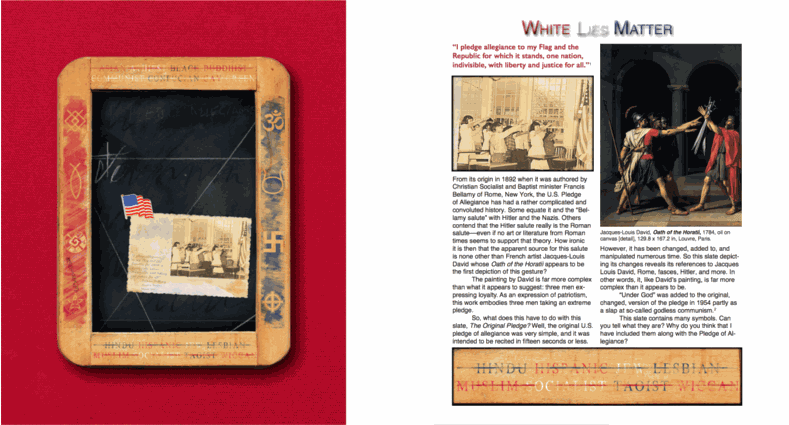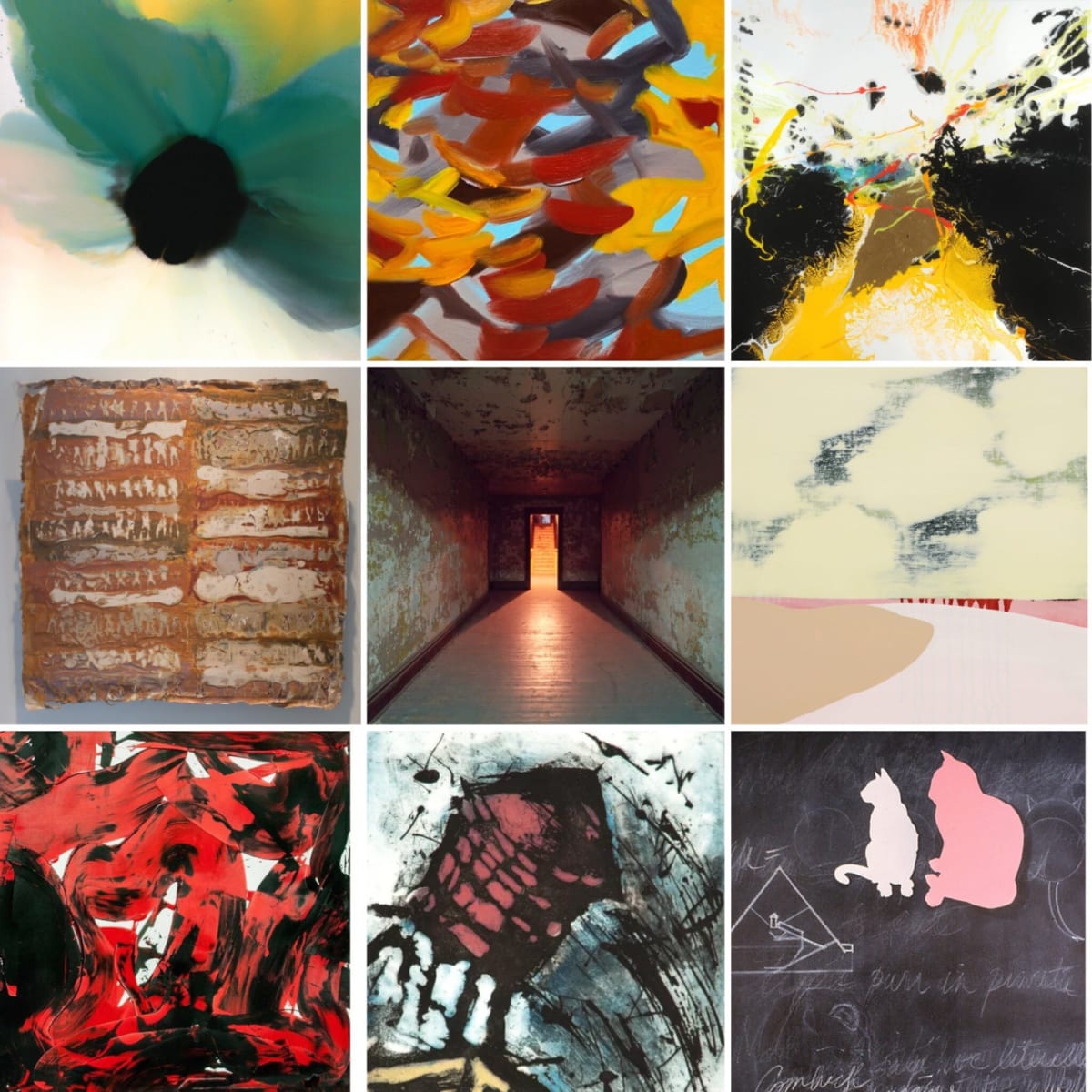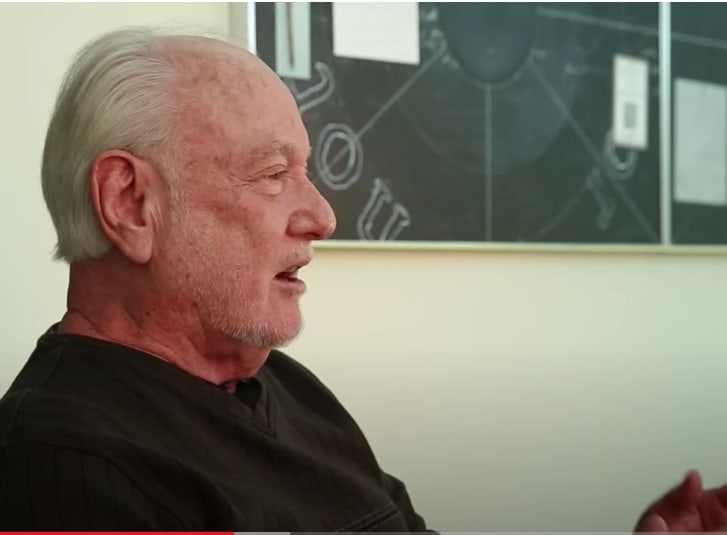John A. O'Connor
"The importance of pedagogy in O’Connor’s artistic personality–in his art as much as in his professional standing–has manifested with a kind of ecstatic clarity in his blackboard paintings. After all, as he observes, “I have been surrounded by blackboards for most of my life.”
John O’Connor’s painting breakthrough came, appropriately for an artist who is also a professor, in a University of Florida classroom. He was, as so often, looking at a blackboard. That was the breakthrough. “It was staring me in the face,” he told a TV interviewer. “The perfect vehicle for my art”. This was 1984 and the chalkboard paintings, O’Connor’s most ambitious and commanding suite of work, were underway the following year.
O’Connor had begun making art over three decades before in Northern California. He was painting, and much impacted by the Bay Area realists, one of whom, Richard Diebenkorn, he got to know well. It was other California artists, such as Wayne Thiebaud, who steered him towards also having a teaching career. This took him to Ohio University in 1965 and to the University of Florida four years later.
At this time O’Connor was making the paintings he described as Conceptual Realism, the work which developed into the Chalkboard Series. Here he shows a huge gift for rendering objects – a crumpled envelope, a scrap seemingly taped a canvas - with the finesse of a high-res photograph, making you itch to reach out and touch them. This faux work brings to my mind an observation by the French history painter, Paul Delaroche in 1839, after he was shown a daguerrotype, (a very early photograph), "From today painting is dead", he gloomed.
Well, painters, of course, mostly followed the Impressionists, into making their practice thoroughly painterly, but a handful will confront photography, making ultra-realist work, amongst them the 19th century American maestros of trompe l’oeil, William Harnett and John Frederick Peto. O’Connor sees no likeness between this work and his own project, though, and rightly so. They, like such contemporary equivalents as the sculptors Duane Hanson and Ron Mueck, give viewers a Wow! moment, like a dazzling card trick, but the work then becomes a curiosity, inhabiting an eternal Now. What O’Connor does with these chalk boards is wholly different. The powdery smudges, the adds indicate history, whereas the diagrams, the notes point towards the future. But they are a painted surface, a simulacrum. Note that the artist O’Connor lists as the major influence on his work, that implacable foe of “retinal art”, Marcel Duchamp.
A memory. In the early 70s I watched Joseph Beuys at the Institute of Contemporary Arts, London, scribbling and doodling in chalk onto small green oblong slates and chucking them to either side. It was what we all experienced at school, the blackboard as a visible thought process, sprouting diagrams, symbols, numerals, rubbed into cloudy white nothingness, and replaced by another system, equally evanescent.
O’Connor goes way further though, replicating the chalk boards as paintings. Such as Homage to Red Green, a scrawled-upon blackboard upon which are stuck post-its, a hockey stick, and a reproduction of the Josef Albers that gives the piece its name. Or The Thirteenth Element, a patterny green chalk board to which are stuck decals, a photograph, a dangling pine-cone. These details all being convincing paintwork, but John O’Connor is not just gaming us, he is targeting and questioning the nature of reality itself.
- Anthony Haden-Guest
O’Connor’s works–particularly the “blackboard” paintings, in which the invocation of a lesson is most direct–would seem to be firmly entrenched in the postmodern questioning of discourse, both visual and verbal.
--Richard Vine
John A. O’Connor, a practicing professional artist, was born in Twin Falls, Idaho in 1940. He studied art at Sacramento City College (with Greg Kondos and Wayne Thiebaud), California State University, Sacramento (with Fred Schmid), Mexico City College, D.F. (now University of the Americas-with John Golding), and the San Francisco Art Institute (with James Weeks). He received an AB with Honors ( 1961) and an MAA ( 1963) from the University of California, Davis (with Joseph Baird, Theophilus Brown, Roland Petersen, Wayne Thiebaud, and William T. Wiley). He subsequently taught art at the University of California, Santa Barbara; Blake College, Valle de Bravo, Mexico; Ohio University, Athens; and at the University of Florida, Gainesville until 2005, where he became Professor of Art, Emeritus.
John has had 36 solo exhibitions of his paintings, including a number of retrospectives, and has participated in more than 200 group exhibitions. He has received numerous awards and honors including a National Endowment for the Arts/Southern Arts Federation Fellowship, and several State of Florida Individual Artist Fellowships. His work is included in a many public, university, college, corporate and private collections nationwide. Now halfway through his sixth decade producing paintings, drawings, and prints, he is continuing to explore new ideas, methods, and techniques.
-

Small Standing Tall
Small Works by Big Artists 8 May - 5 Jun 2021KTC Affiliated Artists is pleased to present Small Standing Tall , an exhibition of small paintings, prints, photographs and sculpture by 12 mid-career artists. The exhibition is hosted by the Joyce Goldstein Gallery at 19 Central Square, Chatham, NY with hours Thursday - Sunday 1:00-4:00pm. The exhibition opens on Sat....Read more -

THE STORY-TELLERS curated by Anthony Haden-Guest
SOL HILL, DEBORAH MASTERS, STEWART NACHMIAS, JOHN A.O'CONNOR & LOU TAVELLI 7 Feb - 31 Oct 2021This group show is truly post-Post-Modernist in that no glue of theory connects these five artists, there's no Ism budding here, just the felt awareness that each artist is drawing from a well of meaning, using storytelling as a scaffold for their work. From Lou Tavelli’s cave paintings to Sol...Read more -

John A. O'Connor: White Lies Matter
Decoding American Deceptionalism 22 Oct 2020 - 31 Oct 2021“Artist/art professor John A. O’Connor characterizes his series White Lies Matter: Decoding American Deceptionalism as “a history of American hypocrisy.” Using the image of the slate as a consistent base, White Lies Matter ranges across historical and contemporary America, touching down at flashpoints of inequality, misunderstanding, and conflict. From the...Read more -

KTC Affiliated Artists Inaugural Group Exhibition Part II
Virtual Gallery Exhibit 17 Sep 2020 - 31 Oct 2021KTC Affiliated Artists opens another new virtual art exhibition space dedicated to the digital representation of artwork on the internet. The KTC Affiliated Artists Inaugural Group Exhibition Part II presents nine established artists whose distinguished careers span decades. The artists: Sarah Hinckley , Bassmi Ibrahim , Anne Marchand , Stewart...Read more
2021 - White Lies Matter : Decoding American Decptionalism John A. O'Connor, iUniverse ISBN : 9781663210951

